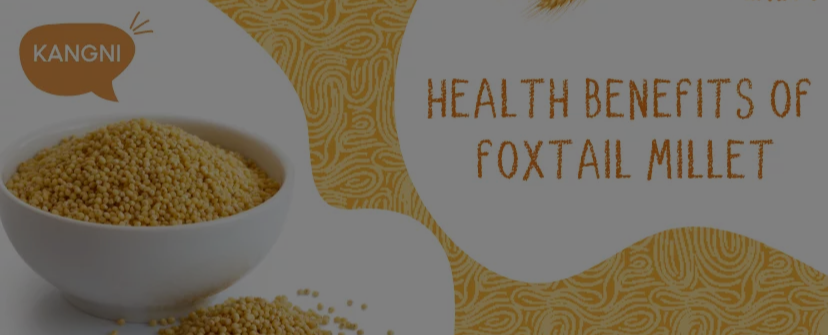
Posted on 4th August 2023
Strolling through a field, you suddenly spot these cute little plants with slender stalks swaying in the breeze. But wait, what’s that? They resemble fluffy foxtail millets in certain ways. And that’s exactly how this unique grain came to be known as foxtail millet! So here’s the story.
Foxtail millet has seed heads that are beautiful, bushy clusters resembling foxes’ fluffy tails.
Let me guess. You’ve been on a never-ending quest to find the perfect addition to your diet that not only satisfies your taste buds but also aligns with your health and wellness goals. You’re tired of fad diets and superfoods that promise the world but fail to deliver lasting results.
Despite your best efforts, you find yourself stuck in a cycle of unhealthy eating habits, feeling sluggish, and struggling to maintain a balanced lifestyle. You crave a solution that’s both effective and sustainable – something that truly makes a difference in your well-being.
Tiny in size but mighty in potency – such are foxtail millets. These small and golden-yellow grains have been our healthy friends for over 8,000 years.
Although a few setbacks occurred due to the intervention of fast food, the bond is getting strengthened again. Today, we know foxtail millet as a powerful ally in our quest for a healthier lifestyle. And for all the fantastic reasons.
You can enjoy chukandar in juice, cooked, pickled, or raw forms. A versatile vegetable, beets may add natural colour to salads, soups, and side dishes.
Once you’ll read about the many foxtail millet benefits, you will fail to resist your inner chef from coming out.
Let’s learn why.
Many stories go about how foxtail millet became a good part of our diet. However, none are confirmed.
But what is confirmed is that it soon became a familiar sight in every kitchen. As much as studies have confirmed, the roots of the foxtail’s domestication go back around 8,000 years.
To date, the oldest evidence of its domestication reveals its aroma to be coming from China. It was cultivated back then along the ancient path of the Yellow River in Cishan, China. But now, it is everywhere. Especially in India, these grains are slowly becoming a favourite of many again. And one big cause of this is its nutrition. So, what nutrition do you get from foxtail millet?
Foxtail Millet – Nutritional Value per 100 grams
Looks super nutritious right? Apart from these macro and micronutrients, these grains grow also with the grace of antioxidants. These phytonutrients are what make them alluring. And so, this millet reached every corner of the world. In India alone, foxtail millet is known by many names.
Foxtail millet, also known as Setaria italica, is a type of grass with tiny seeds roughly 2mm, covered in a thin, crispy hull and often available in a light yellowish-brown hue.
It is referred to as kangni in Hindi. You can find these tiny golden grains worldwide while it is popular in Asia, especially in nations like China, Japan, and India. It is commonly grown in the southern Indian states of Andhra Pradesh, Karnataka, and Tamil Nadu.